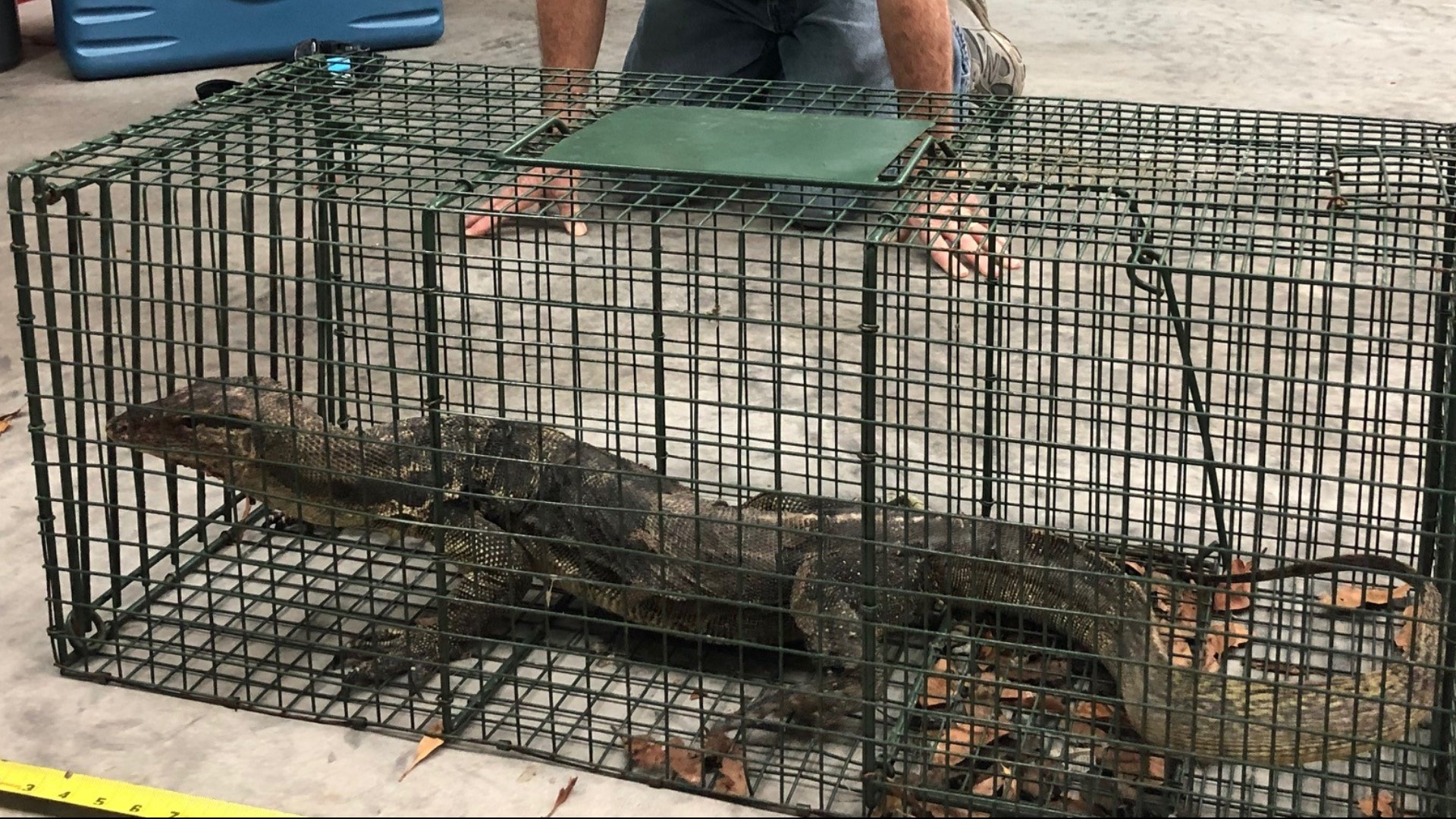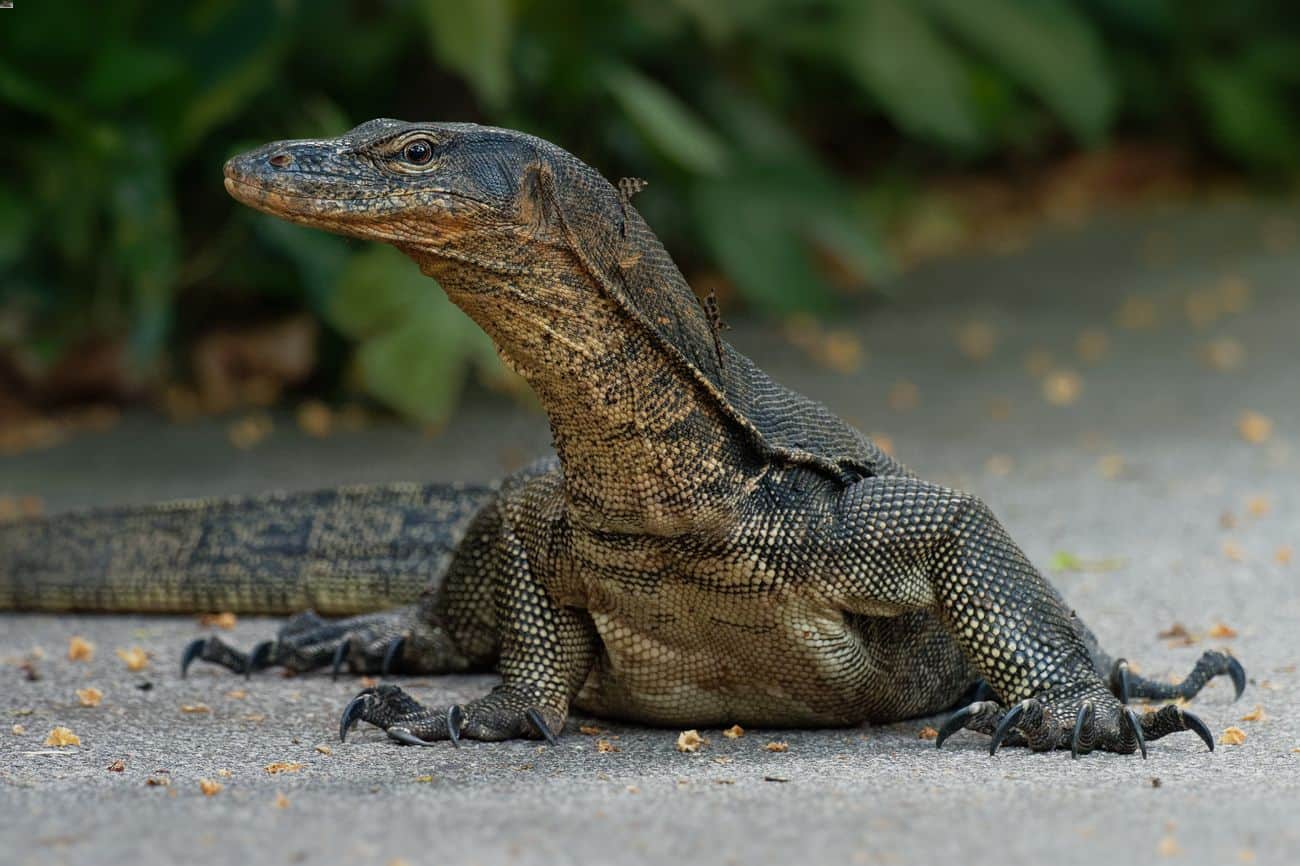Asian Water Monitor Habitat and Distribution

Asian water monitor florida – The Asian water monitor, a large, semi-aquatic lizard, has established thriving populations in Florida, significantly altering the state’s ecological landscape. Understanding the habitat preferences and distribution patterns of this invasive species is crucial for effective management and conservation efforts.
The invasive Asian water monitor has been making headlines in Florida, with its aggressive behavior and ability to decimate native wildlife. While this environmental issue deserves attention, it’s also important to consider the ongoing debate over the commanders name change.
As the Asian water monitor continues to threaten Florida’s ecosystem, it’s crucial that we find solutions that protect both our environment and our cultural heritage.
Natural Habitat in Florida
Asian water monitors prefer warm, humid environments with access to both water and land. In Florida, they inhabit a diverse range of habitats, including:
- Wetlands: Marshes, swamps, and floodplains provide ample food sources and cover for Asian water monitors.
- Rivers and lakes: These water bodies offer abundant prey and basking spots along the banks.
- Canals and ditches: Artificial waterways provide suitable habitats for Asian water monitors, connecting different water bodies and expanding their range.
Factors Influencing Distribution and Population Dynamics
Several factors influence the distribution and population dynamics of Asian water monitors in Florida:
- Temperature: Asian water monitors are ectothermic, relying on external heat sources to regulate their body temperature. They prefer warm climates and are more active during the warmer months.
- Prey availability: The abundance of prey, such as fish, frogs, and small mammals, is a major factor determining the distribution and population density of Asian water monitors.
- Habitat connectivity: Asian water monitors are highly mobile and can disperse over long distances. Connected waterways and corridors facilitate their movement and expansion.
Specific Regions and Water Bodies
Asian water monitors are widely distributed in Florida, with established populations in several regions:
- South Florida: The Everglades, Biscayne Bay, and the Florida Keys are major hotspots for Asian water monitors.
- Central Florida: The St. Johns River and its tributaries provide suitable habitats for this invasive species.
- North Florida: Asian water monitors have been reported in the Suwannee River and other waterways in the northern part of the state.
Asian Water Monitor Diet and Feeding Habits: Asian Water Monitor Florida

The Asian water monitor is an opportunistic predator with a diverse diet that includes a wide range of animal prey. Its primary food sources include fish, frogs, snakes, lizards, birds, and small mammals. They have also been known to scavenge on carrion and eat fruits and vegetables.
Hunting and Feeding Strategies
Asian water monitors are ambush predators that typically lie in wait for their prey near water bodies. They use their keen eyesight and sense of smell to detect potential meals. When an unsuspecting animal comes within range, the monitor will launch a lightning-fast strike, using its powerful jaws and sharp teeth to subdue its victim.
The monitor’s opportunistic nature allows it to exploit a variety of food sources. It will readily consume whatever prey is available, regardless of size or species. This flexibility has contributed to the monitor’s success as an invasive species in many parts of the world.
Impact on the Local Ecosystem
The Asian water monitor’s voracious appetite can have a significant impact on the local ecosystem. In areas where they have been introduced, they have been known to prey on native species, including endangered or threatened animals. This can disrupt the natural balance of the ecosystem and lead to a decline in biodiversity.
Additionally, the monitor’s scavenging habits can contribute to the spread of disease. By consuming carrion, they can act as vectors for pathogens that can infect other animals and humans.
Asian Water Monitor Behavior and Reproduction
Asian water monitors exhibit a complex range of behaviors and reproductive strategies. Their social behavior includes elaborate communication methods, territoriality, and defensive mechanisms.
Communication
Asian water monitors communicate through a variety of methods, including body language, vocalizations, and chemical signals. They use head nods, tail flicks, and body postures to convey messages to each other. Vocalizations, such as hisses and growls, are used to warn of danger or assert dominance. Chemical signals, such as pheromones, are used to mark territory and attract mates.
Reproduction, Asian water monitor florida
Asian water monitors reach sexual maturity at around 3-5 years of age. Mating rituals involve elaborate courtship displays, in which males chase females and perform head-bobbing and tail-waving. Nesting habits vary depending on the habitat, but females typically lay their eggs in burrows or under logs. The eggs are incubated for around 90-120 days, and the hatchlings are independent from birth.
Territoriality and Defense
Asian water monitors are highly territorial animals and defend their territories from other monitors and potential predators. They use their powerful jaws and sharp claws to deter threats. If threatened, they may also flee into the water or climb trees to escape danger.
Asian water monitors are semi-aquatic lizards that are native to Southeast Asia. They are also known as common water monitors, and they are one of the largest species of lizards in the world. Asian water monitors are found in a variety of habitats, including swamps, marshes, and rivers.
They are also found in urban areas, where they can be found in canals and drainage ditches. Asian water monitors are not native to Florida, but they have been introduced to the state and are now found in a number of counties.
They are a threat to native wildlife, and they can also be dangerous to humans.
Asian water monitors, found in the swamps of Florida, have recently gained attention for their striking appearance. These massive reptiles, with their long tails and sharp claws, resemble prehistoric creatures. In a curious twist, the name “Shiloh” has emerged as a popular choice for these animals.
According to recent studies , this shift in nomenclature is attributed to the biblical figure Shiloh, known for his role in the establishment of the Israelite nation. The connection between the Asian water monitor and Shiloh remains unclear, but it adds an unexpected layer to the enigmatic nature of these ancient reptiles.
The Asian water monitor is an apex predator in its native range, but in Florida, it’s an invasive species that has caused ecological damage. The state’s wildlife officials are now working to control the population. Meanwhile, the Lakers head coach is facing criticism for his team’s poor performance this season.
Despite the team’s struggles, the coach remains confident that they can turn things around. The Asian water monitor is a reminder that even the most powerful creatures can be vulnerable to change.
The Asian water monitor, an invasive species found in Florida, poses a threat to the state’s ecosystem. Its aggressive behavior and voracious appetite have raised concerns among wildlife officials. The situation has prompted the government to declare a state of emergency , allowing for swift action to control the spread of this invasive species.
The Asian water monitor’s impact on native wildlife and the environment highlights the need for ongoing efforts to address invasive species in Florida.